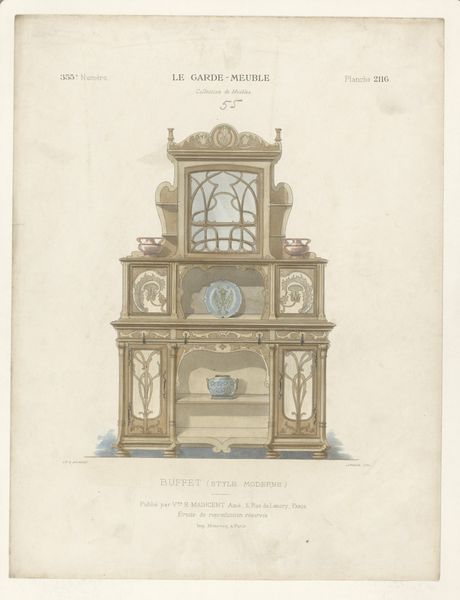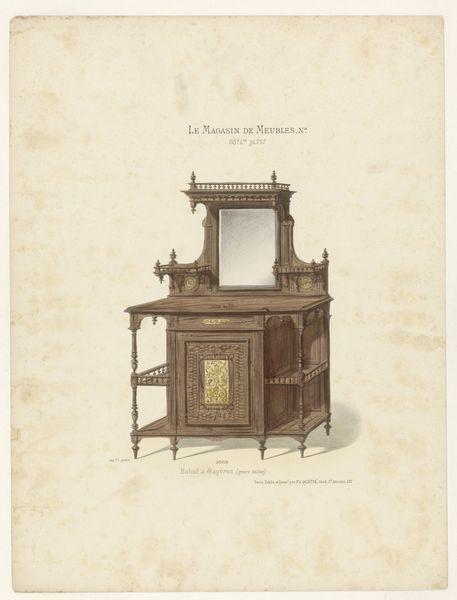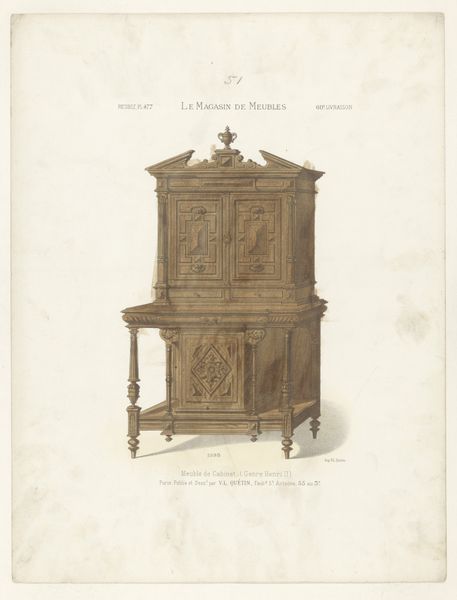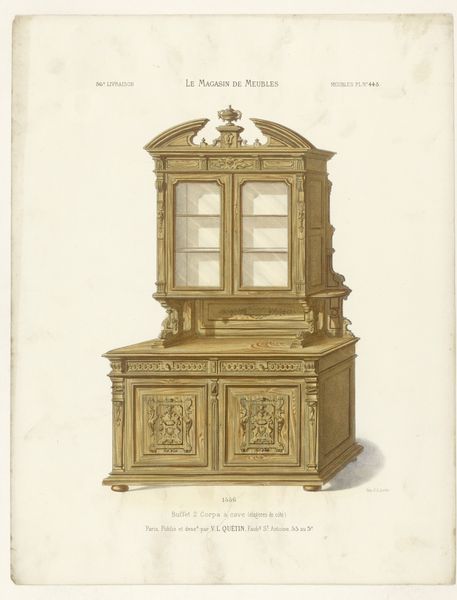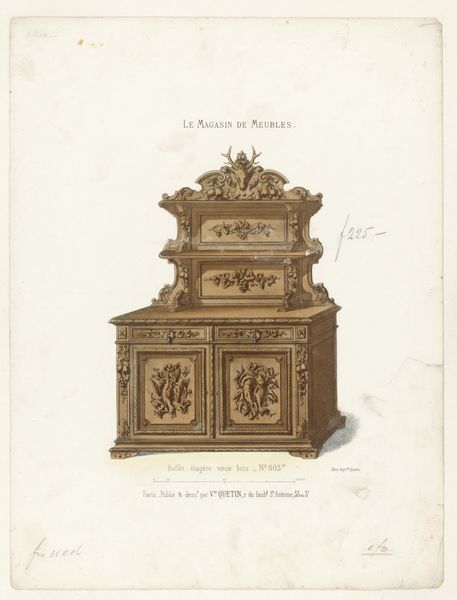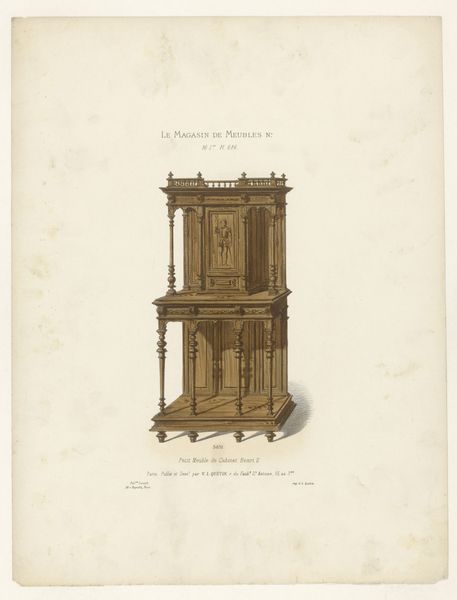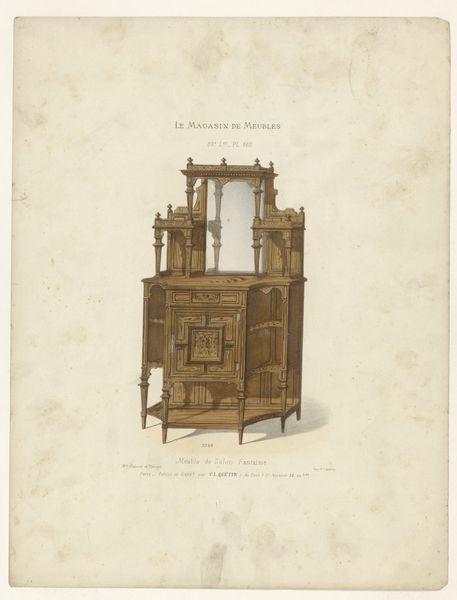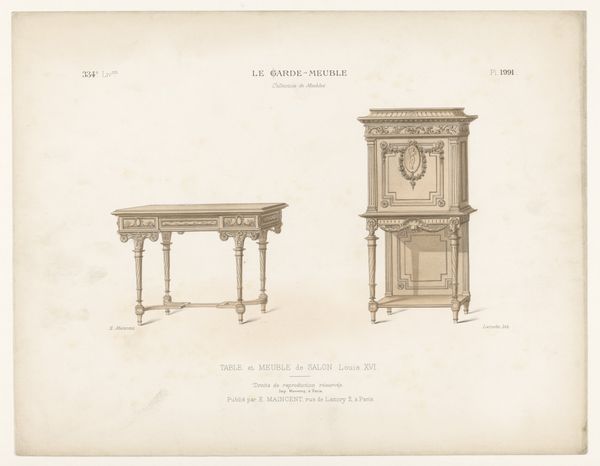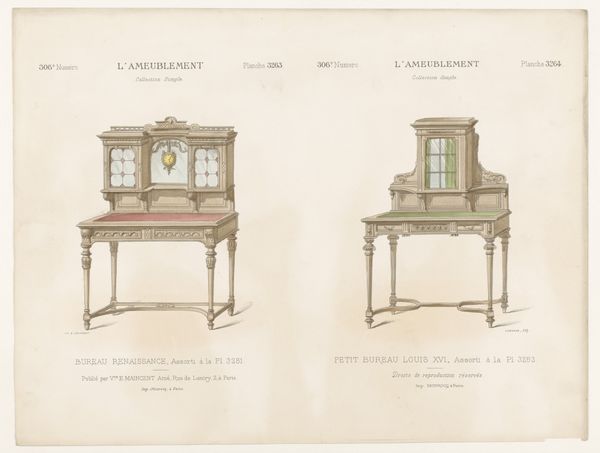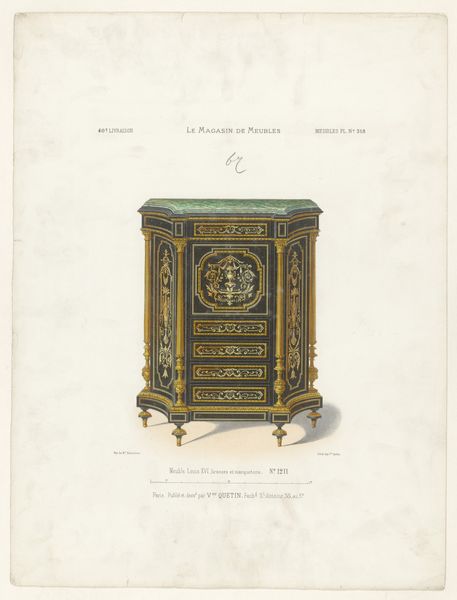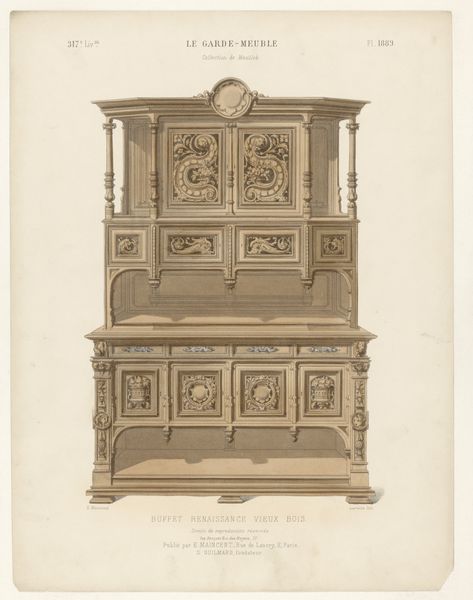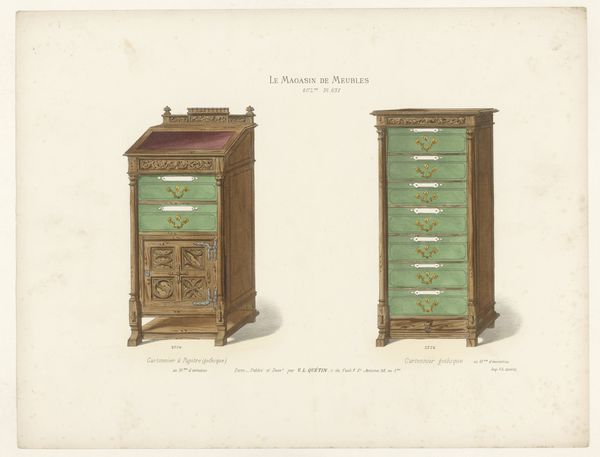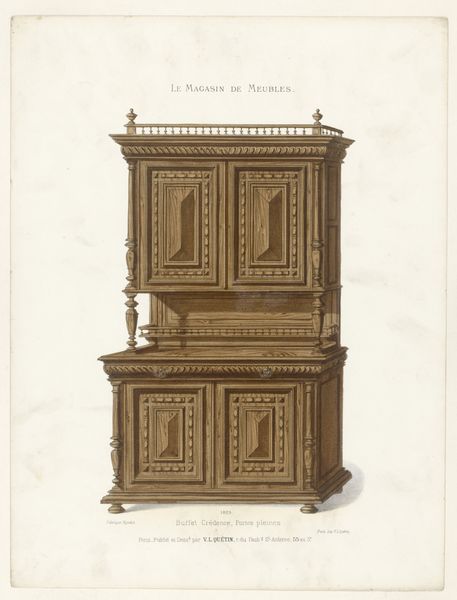
print, engraving
# print
#
history-painting
#
decorative-art
#
engraving
Dimensions: height 359 mm, width 278 mm
Copyright: Rijks Museum: Open Domain
Editor: This engraving, called "Kast," dates from after 1878. It's a rendering of a cabinet, probably meant for displaying china, maybe from an advertisement. What's interesting to you about the object, beyond its obvious functionality? Curator: It is precisely this tension between functionality and display that fascinates me. Observe how the artist uses very specific visual cues. Note the repetition of circular forms—the plates—held within the rectilinear structure of the cabinet. Editor: It creates a contrast, almost a visual argument. Curator: Indeed! The cabinet itself is stable, a symbol perhaps of domesticity and order, but then the plates are each miniature worlds, likely depicting landscapes or narrative scenes. Consider the cultural memory embedded in such objects. These plates, carefully arranged, tell stories beyond their immediate decorative purpose. Do you sense an invitation? Editor: An invitation? Curator: Yes! To consider what stories we project onto these commonplace objects, the symbolic weight they accumulate over time, how they reflect our desires, our history. The Kast is more than a mere container. What do the cabinet's ornaments suggest to you about value and culture? Editor: That it's also a container of meanings... of cultural aspirations, a storehouse for family treasures. I see a dialogue between utility and aspiration. Thanks for sharing your interpretation. Curator: My pleasure. Hopefully it sparked a deeper look into this decorative art!
Comments
No comments
Be the first to comment and join the conversation on the ultimate creative platform.
